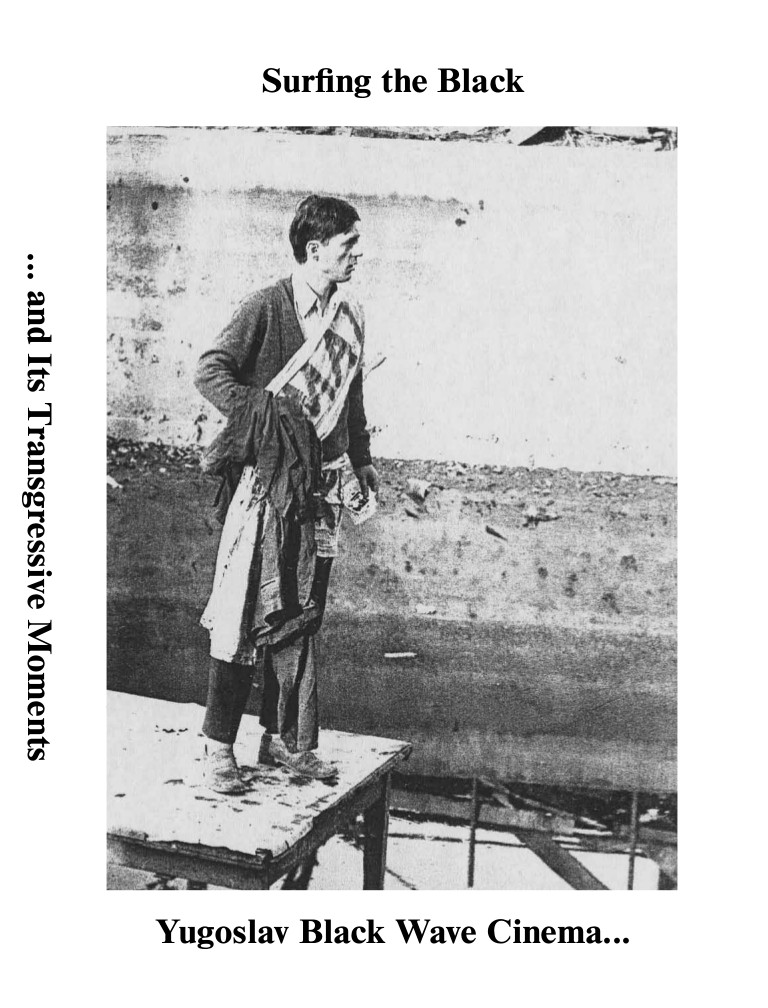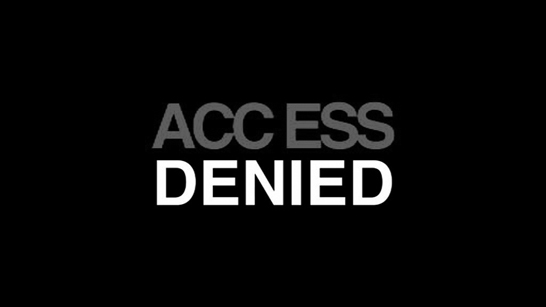Gal Kirn, Dubravka Sekulić, Žiga Testen (eds.): Surfing the Black: Yugoslav Black Wave Cinema and Its Transgressive Moments (2012)
Filed under book | Tags: · 1960s, 1970s, cinema, film, film history, film theory, yugoslavia

The Yugoslav black wave cinema of the sixties and the seventies is one of the grand, though hidden, chapters of cinema history. Talented young authors, working under the sign of individual expression and aesthetic experimentation, pushed and explored the limits of the constraints of a socialist state. Their efforts lead to a new path of visual expression, so outstanding by its social and political engagement, its formal invention and its courage.
This book is the result of a multi-disciplinary research attempting to cross over politics, philosophy, design, art, architecture, and some speculative thinking. Starting from archival work, interviews, seminars, screenings and a conference, Surfing the Black has found its (temporary) conclusion in a publication consisting of six theoretical essays and three fanzines that open up the black wave film experience to current affairs. This is Yugoslavia, and modern cinema, at its blackest and brightest.
With six theoretical essays (by Boris Buden, Pavle Levi and Owen Hatherly, among others) and fanzines comprising an interview with one of the most important Yugoslav filmmakers, Želimir Žilnik, and a comprehensive glossary of terms that belong to the period and field of Yugoslav culture and politics, this is the first book on the subject in the English-speaking world.
With contributions by Sezgin Boynik, Boris Buden, Mladen Dolar, Owen Hatherly, Ana Janevski, Gal Kirn, Pavle Levi, Nicholas Matranga, Peter Rauch, Dubravka Sekulić, Žiga Testen and Samo Tomšič.
Edited by Gal Kirn, Dubravka Sekulić and Žiga Testen
Publisher Jan van Eyck Academie, Maastricht, The Netherlands
ISBN 9072076516, 9789072076472
216 pages
PDF (updated on 2012-9-4)
Comment (0)Vertigo Magazine, 30: Godard Is (2012)
Filed under magazine | Tags: · cinema, film, film criticism, film history, film theory

“An image of the Virgin and her baby on a donkey doesn’t cause a war; its interpretation by a text is what will lead to war and cause Luther’s soldiers to go and deface Raphael canvases. I have a strong feeling that the image enables us to talk less and say more.” – Jean-Luc Godard
“There are very few important books written about film or cinema. Maybe one should only read Bresson’s Notes on the Cinematographer, Ramuz’s novels or even Giacometti’s writings to understand what cinema is. Everything else is better written, or thought of in philosophy, poetry and literature. So why more writings on film? To incite, by any means, the desire to see these films which otherwise would be lost in the cultural wasteland we are crossing.
[..] Vertigo Magazine takes inspiration from Godard’s oeuvre. Godard is one if not the most influential filmmaker to explore the role of the moving image within aesthetics, politics and history. His work represents in its most emblematic way the crossover between the poetical and the historical, cinema and the arts, which will also be at the core of our publication. A ‘double bind’, Guattari’s crayfish.” (from the Editorial)
Contributions by Frieda Grafe, David Brancaleone, Corin Depper, James Norton, Jürgen E. Müller, Duncan White, James S. Williams, Adrian Martin, Ágnes Pethő, Jerry White, Robert Barry, Roland-François Lack, Cyril Neyrat, Jonathan Rosenbaum.
Editor: Damien Sanville
Assistant Editor: Michael Garrad
Commissioning Editors: Julian Ross, Robert Chilcott
Publisher: Close-Up Film Centre, London, UK, Spring 2012
Godard on Godard: Critical Writings by Jean-Luc Godard (1968/1986)
Filed under book | Tags: · cinema, film, film criticism, film history, film theory

Jean-Luc Godard, like many of his European contemporaries, came to filmmaking through film criticism. This collection of essays and interviews, ranging from his early efforts for La Gazette du Cinéma to his later writings for Cahiers du Cinéma, reflects his dazzling intelligence, biting wit, maddening judgments, and complete unpredictability. In writing about Hitchcock, Welles, Bergman, Truffaut, Bresson, and Renoir, Godard is also writing about himself—his own experiments, obsessions, discoveries. This book offers evidence that he may be even more original as a thinker about film than as a director. Covering the period of 1950–1967, the years of Breathless, A Woman Is a Woman, My Life to Live, Alphaville, La Chinoise, and Weekend, this book of writings is an important document and a fascinating study of a vital stage in Godard’s career. With commentary by Tom Milne and Richard Roud, and an extensive new foreword by Annette Michelson that reassesses Godard in light of his later films, here is an outrageous self-portrait by a director who, even now, continues to amaze and bedevil, and to chart new directions for cinema and for critical thought about its history.
Unabridged republication of the edition published in New York and London in 1972, originally published in French by Editions Belfond, 1968
Translated by Tom Milne
Edited by Jean Narboni and Tom Milne
New foreword by Annette Michelson
With an introduction by Richard Roud
Published by Da Capo Press, New York, 1986
ISBN 0306802597, 9780306802591
302 pages

